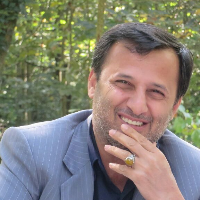Comparative evaluation of IRS-P6-LISS-III and LISS IV images for canopy cover mapping of Zagros forests (Case Study: Javanroud Forests)
In order to evaluate capability of the IRS-P6- LISS-III and LISS IV images for canopy cover mapping a case study was done on forests of Javanroud in Kermanshah province. The quality of images was evaluated for radiometric and geometric errors. No considerable radiometric distortion was found in the images. The LISS-III images were geometrically corrected with image to image method using 18 ground control points. The RMSE was 0.43 and 0.36 pixels, towards X and Y, respectively. Several image enhancements such as spectral rationing, PCA transformation and vegetation indices were performed. To reduce the effect of soil reflectance, suitable vegetation indices were prepared using soil line parameters. A ground truth map was generated through random systematic sampling with sample size 60 m×60 m. The canopy cover percent of trees was measured in two directions and percentage of canopy cover was computed in each plot. Based on canopy cover the plots were classified into four classes (very thin, thin, semi-dense and dense). Twenty five of sample plots from each class were selected as training area and the best spectral bands were selected using divergence separability index. Regarding canopy cover area and in order to equalize the pixel size of LISS-IV and LISS-III images, pixel sizes of LISS-IV images were aggregated in 5×5 pixels. A supervised classification was accomplished on the best and main bands. The accuracy assessment of generated map was evaluated using 75% of the sample plots. The results showed that using the LISS-III image data within 4 density classes the highest overall accuracy and kappa coefficient were equal to 65.77% and 0.45 and using aggregated LISS-IV images they were 63.27% and 0.41 respectively. These results showed that using the best selected bands by maximum likelihood algorithm could better map forest canopy cover classes. In order to improve the results, the very thin class with thin class and semi-dense with dense classes were merged together respectively and classification was again repeated. In this case, the maximum likelihood classifier algorithm using the best selected LISS-III bands showed the highest overall accuracy and kappa coefficient of 78.68% and 0.57 respectively and the minimum distance to mean classifier algorithm using the best selected equalization of LISS-IV bands showed the highest overall accuracy and kappa coefficient of 78% and 0.57 respectively. Conclusion to be made from this investigation is that in such sparse forests, low canopy area of forest species as well as the soil reflectance as background cause low performance of classification.
Canopy cover mapping , LISS , III , IV , Zagros forests , IRS , P6 , Javanroud
- حق عضویت دریافتی صرف حمایت از نشریات عضو و نگهداری، تکمیل و توسعه مگیران میشود.
- پرداخت حق اشتراک و دانلود مقالات اجازه بازنشر آن در سایر رسانههای چاپی و دیجیتال را به کاربر نمیدهد.


